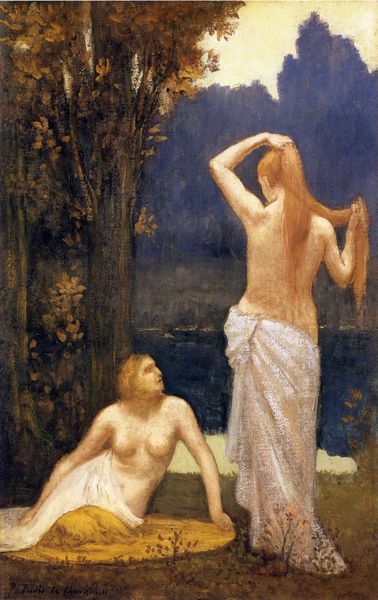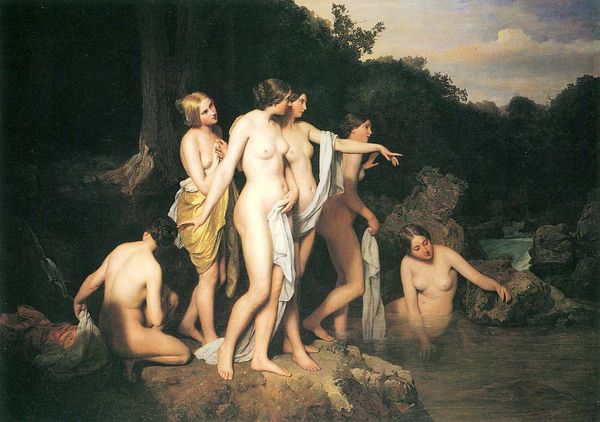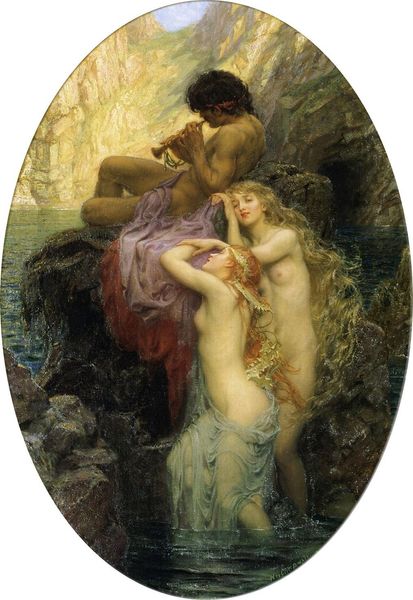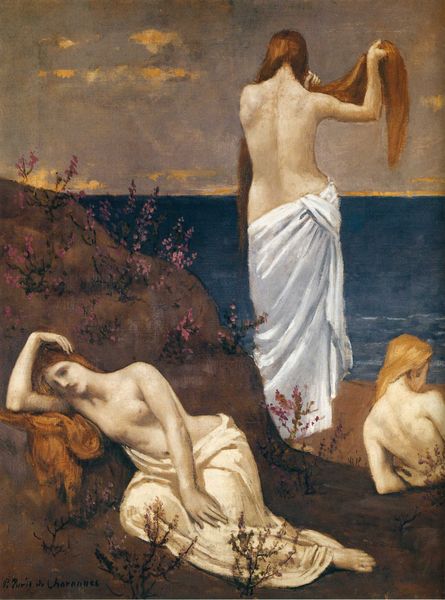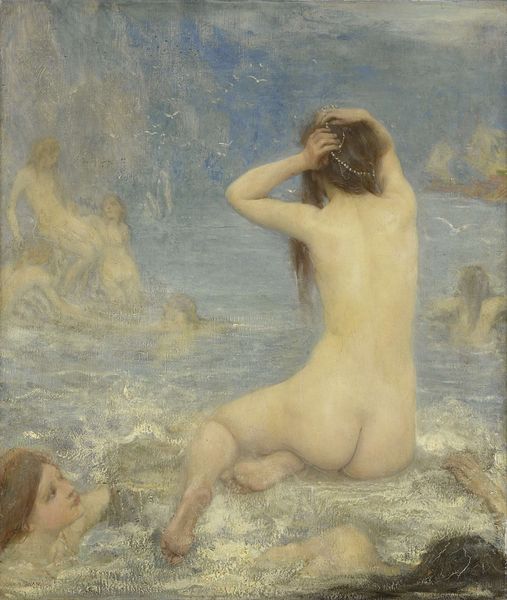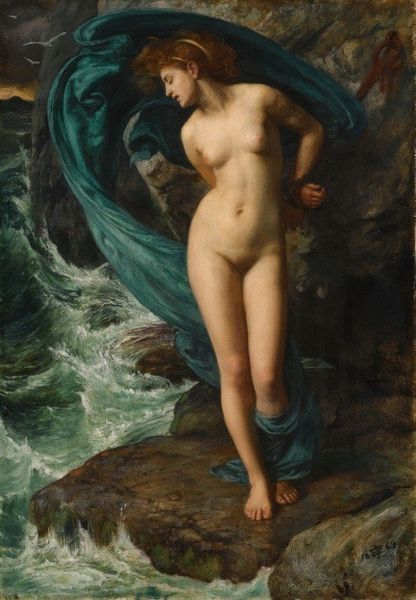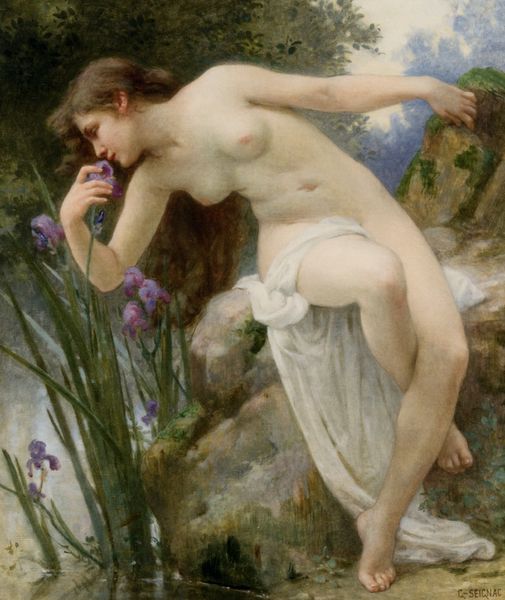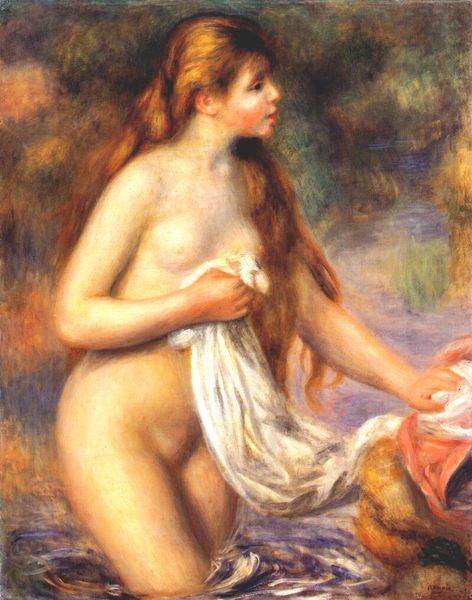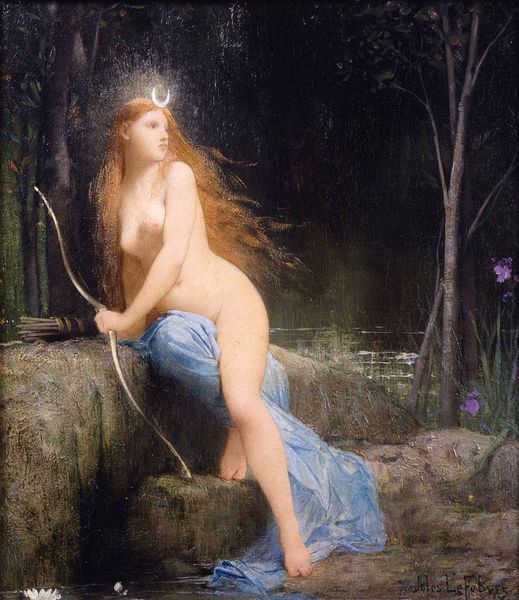
Copyright: Public domain
Editor: So, this is Herbert James Draper’s “The Pearls of Aphrodite,” painted in 1907, oil on canvas. I’m really struck by the figures clustered together, almost like they're inspecting the product of labor...what do you make of it? Curator: What I immediately see is a complex negotiation of materials and labor disguised within a classical scene. Think about where those pearls come from. Diving for pearls was an incredibly dangerous job, primarily performed by enslaved or lower-class individuals. Editor: So, you're suggesting the painting is less about celebrating beauty, and more about... the socio-economic context of the materials? Curator: Precisely! Consider the racialized dynamic; a Black woman appears to be participating in this system but is quite removed from Aphrodite, and how that highlights inequalities inherent in resource extraction. It pushes us to confront the unseen labor and power structures behind beauty and luxury, questioning who benefits and who pays the price. How does the artist emphasize the distinction in status among his characters through the presentation of materials? Editor: The textures of the draped fabric definitely convey luxury and status compared to the rocky terrain beneath the figures. The very production of the painting itself then... the oil paints, the canvas, are products with their own histories... Curator: Exactly! Draper’s work invites a deconstruction of art and its place in a world built on material exploitation, bridging the gap between high art and the more grounded reality of labor and production. Editor: I see that, understanding that aspect adds a lot more depth. I appreciate learning that. Curator: And hopefully that makes us both more aware consumers of images as well.
Comments
No comments
Be the first to comment and join the conversation on the ultimate creative platform.


